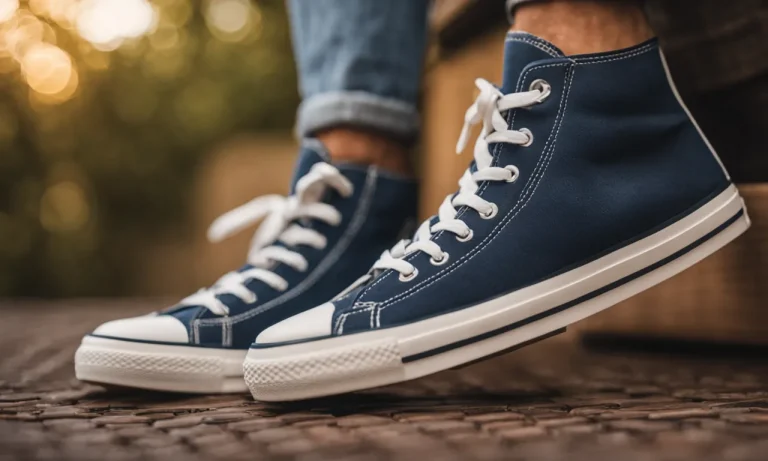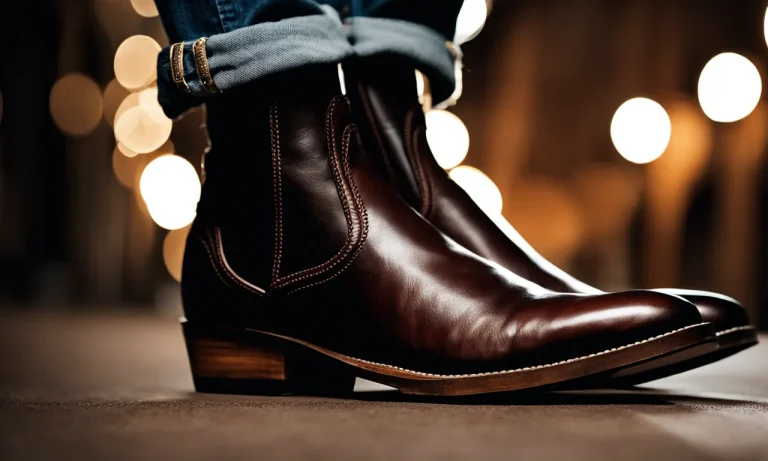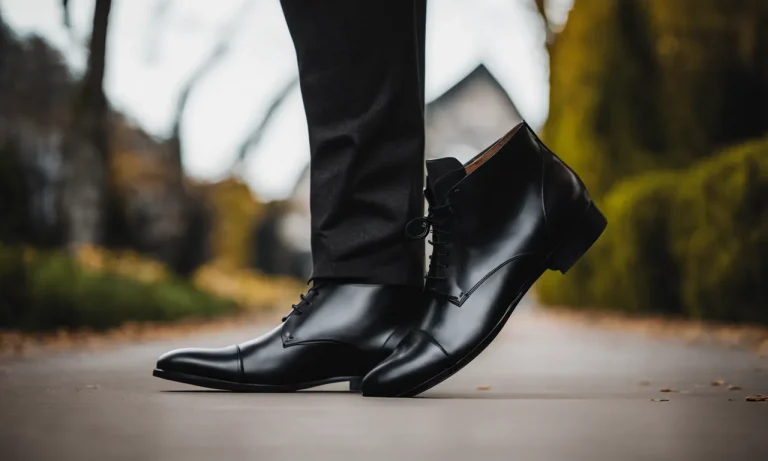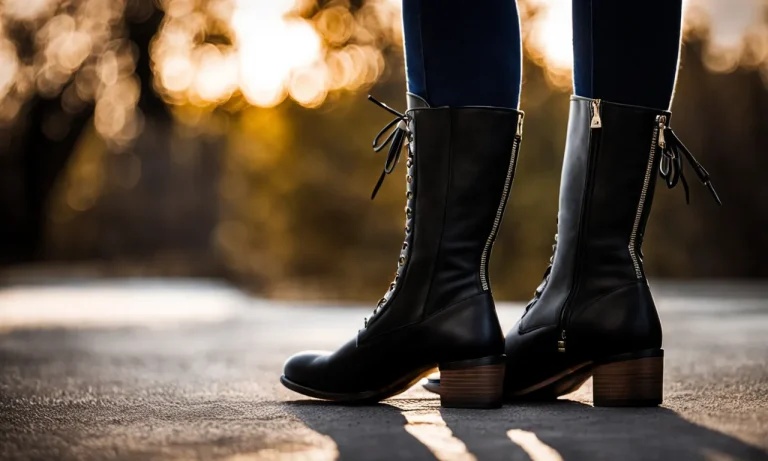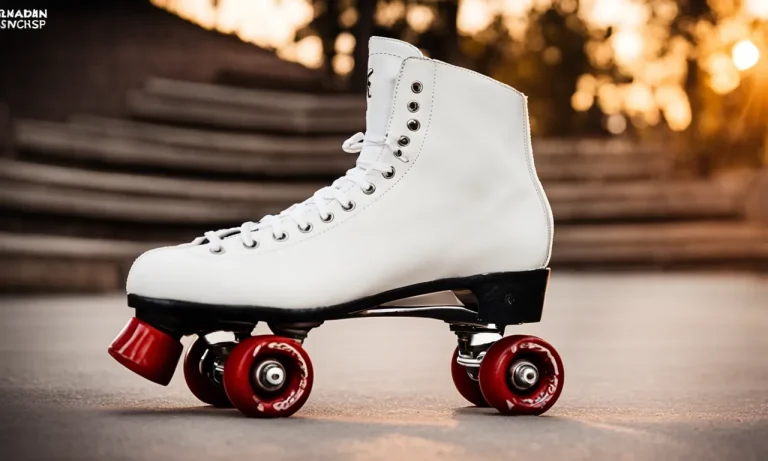Are you looking to buy new ski boots this winter but unsure about how ski boot sizing works? With so many factors like skill level, foot shape, and flex ratings to consider, finding the perfect pair can seem daunting.
But don’t worry – this comprehensive guide will walk you through everything you need to know about ski boot measurements so you can find boots that fit like a glove.
If you’re short on time, here’s the quick answer: Ski boots are measured using the Mondo sizing scale, which corresponds to the length of your foot in centimeters. Most adult ski boots range from Mondo 23 to 31.5.
To find your size, have your foot professionally measured and fitted by a knowledgeable boot fitter.
In this detailed guide, we’ll cover how ski boots should fit, what factors impact sizing, how to measure your feet, how to interpret Mondo sizing charts, and much more. With the information in this guide, you’ll understand exactly what to look for when shopping for new ski boots this season.
How Should Ski Boots Fit?
When it comes to ski boots, getting the right fit is crucial for a comfortable and enjoyable skiing experience. Ill-fitting ski boots can lead to pain, discomfort, and even injury. So, how should ski boots fit? Let’s dive into the details.
The Snugness Test
First and foremost, ski boots should fit snugly. You don’t want them to be too tight or too loose. To check for the right fit, put on the boots and stand up. Your toes should gently touch the front of the boot, but they should not be jammed against it.
There should be enough room to wiggle your toes slightly. If your toes are crammed or curling, the boots are too small. On the other hand, if your feet slide forward when you lean, the boots are too big.
The Heel Hold Test
Another important aspect of ski boot fit is how well they hold your heel. Lift your heel off the ground while keeping your toes on the floor. If your heel lifts easily and slips, the boots are too big. A properly fitting ski boot should hold your heel firmly in place, without any movement.
Comfort and Flex
While the snugness and heel hold are crucial, ski boots should also be comfortable. They should not cause any pressure points or pinching. It’s common for ski boots to feel a bit tight at first, but they should gradually mold to the shape of your feet after some use.
The flex of the ski boot is another consideration. Flex refers to the boot’s resistance to forward movement. Beginners generally benefit from softer flex boots, while advanced skiers prefer stiffer flex for better control. Make sure to choose a flex that matches your skill level and skiing style.
Seek Professional Help
It’s always a good idea to seek professional help when it comes to finding the right ski boot fit. Visiting a ski shop or consulting with a professional boot fitter can make a significant difference. They have the expertise to measure your feet accurately, analyze your skiing style, and recommend the best boots for you.
Remember, a properly fitting ski boot is essential for optimal performance and comfort on the slopes. Take the time to find the right fit, and you’ll be able to enjoy your skiing adventures to the fullest.
What Factors Impact Ski Boot Sizing?
When it comes to ski boot sizing, there are several factors that can impact the size and fit of the boots. These factors include foot shape, ability level, flex rating, and intended use. By understanding how these factors affect ski boot sizing, you can ensure that you find the perfect fit for your feet and skiing style.
Foot Shape
One of the most important factors to consider when sizing ski boots is your foot shape. Everyone’s feet are unique, and ski boots come in various shapes to accommodate different foot shapes. Some people have narrow feet, while others have wide or high-volume feet.
It is crucial to choose ski boots that match the shape of your feet to ensure a comfortable and secure fit. If you’re not sure about your foot shape, it’s a good idea to visit a professional boot fitter who can assess your feet and recommend the right ski boots for you.
Ability Level
Your skiing ability level is another important factor to consider when sizing ski boots. Beginner skiers may benefit from boots that provide more comfort and flexibility, while advanced skiers often prefer stiffer boots for better control and precision.
Ski boot manufacturers typically categorize their boots based on ability levels, so you can easily find boots that are suitable for your skill level. It’s worth noting that your ability level can change over time, so it’s always a good idea to reassess your boot size if you feel that your skiing skills have improved.
Flex Rating
The flex rating of ski boots refers to the amount of resistance the boots offer when you flex your ankles forward. A higher flex rating indicates a stiffer boot, while a lower flex rating indicates a softer boot. The flex rating you choose should depend on your skiing style and preferences.
Aggressive skiers who enjoy high-speed turns and off-piste skiing may prefer boots with a higher flex rating for maximum responsiveness and power transfer. On the other hand, recreational skiers who prioritize comfort and ease of use may opt for boots with a lower flex rating.
Intended Use
The type of skiing you plan to do also plays a role in determining the right ski boot size. Ski boots are designed differently for various disciplines, such as alpine skiing, freestyle skiing, and backcountry skiing.
Each discipline requires specific features and performance characteristics, and the boots are tailored accordingly. For example, alpine ski boots are typically more rigid and provide better control, while freestyle ski boots offer more flexibility and maneuverability for jumps and tricks.
Understanding your intended use will help you narrow down the options and find ski boots that are suitable for your preferred style of skiing.
Remember, finding the right ski boot size is crucial for your comfort, performance, and safety on the slopes. Taking the time to consider these factors and seeking professional advice if needed will ensure that you have an enjoyable skiing experience.
How to Measure Your Feet for Ski Boots
Using a Brannock device
One of the most common and accurate ways to measure your feet for ski boots is by using a Brannock device. This device, commonly found in shoe stores, provides precise measurements of your foot length and width.
Simply place your foot on the device and adjust the sliders until they fit snugly against your foot. The measurements will be displayed on the device, giving you an accurate idea of your foot size.
Tracing your foot
If you don’t have access to a Brannock device, you can also measure your feet for ski boots by tracing them on a piece of paper. Place your foot firmly on the paper and use a pen or pencil to trace the outline of your foot. Be sure to trace both feet as they may differ slightly in size.
Once you have the tracings, measure the length from the heel to the longest toe and the width at the widest part of the foot. These measurements can then be used to determine your ski boot size.
Getting a 3D scan
For a more advanced and precise measurement, you can opt for a 3D scan of your feet. Some ski shops and bootfitters offer this service, which involves using a specialized scanner to create a digital model of your feet.
This allows for a highly accurate measurement of your foot shape, which is crucial for finding the right ski boot that provides optimal comfort and performance. The 3D scan data can be used to recommend specific ski boot models and sizes that are best suited for your feet.
Having a professional bootfitter measure you
For those who want the utmost precision and personalized fitting, visiting a professional bootfitter is highly recommended. Bootfitters are experts in ski boot fitting and have the knowledge and experience to measure your feet accurately.
They will take into account various factors such as foot length, width, arch height, and instep height to determine the perfect ski boot size and model for you. They may also make adjustments to the ski boot’s liner, insole, or shell to ensure a customized fit.
Visiting a bootfitter can greatly enhance your skiing experience and prevent potential discomfort or injuries on the slopes.
Remember, finding the right ski boot size is crucial for your comfort, performance, and safety on the slopes. It is worth investing the time and effort to measure your feet accurately and seek professional guidance if needed.
With properly fitted ski boots, you can enjoy your skiing adventures to the fullest!
Understanding Mondo Point Sizing for Ski Boots
What is the Mondo system?
The Mondo system is a universal sizing system used for ski boots. It is based on the length of your foot in centimeters and is the most accurate way to determine the correct size for your ski boots. Mondo sizing is standardized across all ski boot manufacturers, making it easier for skiers to find the right fit.
Mondo size vs shoe size conversion chart
Converting your regular shoe size to Mondo size can be confusing, but luckily, there are conversion charts available to help you. While there is no exact conversion, as shoe sizes can vary between brands, you can use a general guideline to find your Mondo size.
For example, if you wear a men’s US size 10 shoe, your Mondo size would typically be around 28.5. It’s important to note that this is just a starting point, and trying on different sizes is crucial to finding the perfect fit.
To give you a better idea, here’s a handy Mondo size conversion chart:
| US Men’s Shoe Size | US Women’s Shoe Size | Mondo Size (cm) |
|---|---|---|
| 6 | 7 | 24.0 |
| 7 | 8 | 25.0 |
| 8 | 9 | 26.0 |
| 9 | 10 | 27.0 |
| 10 | 11 | 28.0 |
| 11 | 12 | 29.0 |
How to use Mondo sizing when shopping for boots
When shopping for ski boots, it’s important to prioritize comfort and performance. Using the Mondo sizing system can help you narrow down your options and find the right fit. Here are some steps to follow when using Mondo sizing:
- Measure your foot length in centimeters. You can do this by standing on a piece of paper and tracing the outline of your foot, then measuring the distance from the heel to the longest toe.
- Refer to the Mondo size conversion chart to find your approximate Mondo size.
- Try on different ski boots in your Mondo size. Keep in mind that different brands may have slightly different fits, so it’s important to try on multiple options.
- Make sure your toes have enough wiggle room and that the boot feels snug but not too tight. Your heel should be securely held in place, and there should be no pressure points that cause discomfort.
- Consider getting a professional boot fitting to ensure the best fit. A boot fitter can make adjustments and modifications to the boot to optimize comfort and performance.
Remember, finding the right ski boot size is crucial for a enjoyable and safe skiing experience. Don’t be afraid to ask for assistance from knowledgeable staff at ski shops or do further research on reputable ski gear websites such as skimag.com or evo.com.
Trying On Ski Boots: What to Look For
When trying on ski boots, there are several important factors to consider to ensure a proper fit and optimal performance on the slopes. Here are some key things to look for:
Heel lock
One of the most crucial aspects of ski boot fitting is achieving a secure heel lock. This means that your heel should be snugly held in place without any slipping or movement. To test the heel lock, try flexing your knees and ankles while standing in the boots.
If your heel lifts up or moves around, the boots may be too big or not properly adjusted.
Toe room
Having enough toe room is essential for comfort and circulation. Your toes should be able to wiggle slightly, but not feel cramped or squished. It’s important to remember that ski boots should fit snugly, but not be overly tight in the toe area.
If your toes are constantly hitting the front of the boot, it’s a sign that the boots are too small.
Width
Ski boots come in various widths to accommodate different foot shapes. It’s important to find a boot with the appropriate width for your feet, as this will greatly affect your comfort and performance. If the boots are too narrow, you may experience pain or pressure points.
Conversely, if they are too wide, you may struggle with stability and control.
Flex
The flex rating of a ski boot refers to its stiffness. It’s important to choose a flex that matches your skiing ability and style. Beginners generally benefit from a softer flex, while advanced skiers often prefer a stiffer boot.
Keep in mind that the flex rating can vary between brands, so it’s a good idea to try on different models to find the right level of flex for you.
Canting and alignment
Canting and alignment adjustments can greatly improve your skiing experience. These adjustments help align your lower body with your skis, improving balance and reducing strain on your joints. If you have specific alignment issues, it’s worth consulting with a professional boot fitter who can make the necessary adjustments.
Break-in period
It’s important to allow for a break-in period when trying on ski boots. Ski boots are designed to mold to the shape of your feet over time, so they may initially feel tight or uncomfortable. Give yourself a few days of skiing to allow the boots to adapt to your feet.
If you’re experiencing persistent pain or discomfort after the break-in period, it may be worth considering a different size or model.
Remember, finding the right ski boot fit is crucial for both comfort and performance. If you’re unsure about any aspect of boot fitting, don’t hesitate to seek guidance from a professional boot fitter.
They have the expertise and knowledge to help you find the perfect pair of boots for your skiing adventures.
Conclusion
Finding a properly fitted pair of ski boots is one of the most important investments you can make to improve performance and enjoyment on the slopes. Now that you understand the key factors that go into sizing and fitting ski boots, you can shop smart and find the perfect boots for your ability, foot shape, and skiing style.
Don’t forget to work with a knowledgeable bootfitter and take the time to try on multiple pairs, focusing on important fit elements like heel lock, toe room, and flex. With the right boots under your feet this winter, you’ll be carving up the mountain in comfort and control. Happy skiing!

